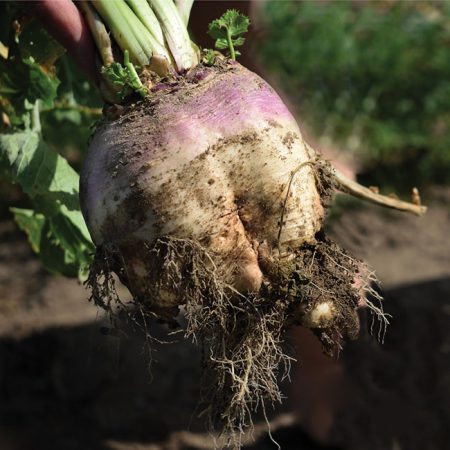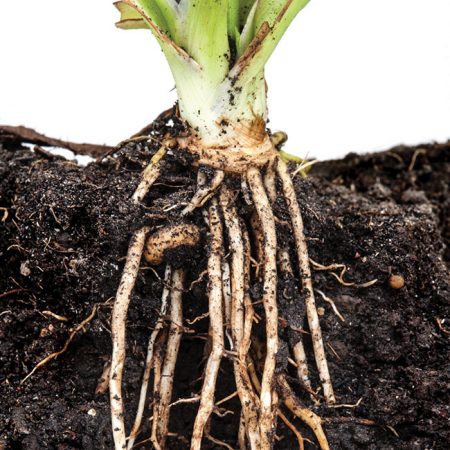
Features
Organic Perspective
A review of regenerative certification programs
April 23, 2021 By Meg Roberts | organiccouncil.ca
 With growing interest in regenerative ag, various programs were developed to measure, certify and verify
regenerative practices. Photos courtesy of the Organic Council of Ontario.
With growing interest in regenerative ag, various programs were developed to measure, certify and verify
regenerative practices. Photos courtesy of the Organic Council of Ontario. Regenerative agriculture is a term used to describe agriculture that not only sustains ecological health but improves it over time. Though many farmers have aspired to achieve some version of this for decades, the term itself has gained new traction in recent years due to its potential to mitigate the effects of climate change. Despite that, no clear or specific definition exists which catalogues a complete list of practices and techniques.
More recently, regenerative agriculture has been lauded for its ability to reverse the effects of climate change through its focus on promoting soil health and sequestering carbon. To this end, the Organic Council of Ontario (OCO) recently conducted a feasibility study that examined the various programs currently emerging on the market that measure, certify and verify regenerative and regenerative organic agricultural practices and their potential for adoption in Ontario. Programs assessed include the Regenerative Organic Certification (ROC), the Ecological Outcome Verification (EOV), the Soil Carbon Initiative (SCI) and more.
The final report for the Regenerative Programs and Incentives Feasibility Study compares and summarizes each program and its potential barriers, benefits and implications for Ontario’s producers and consumers.
What are regenerative certifications and verifications?
Regenerative certification programs vary in their approach, but most measure or quantify similar ecological attributes of a farm, including increasing soil health and carbon sequestration, biodiversity and ecosystem health, increased animal welfare and economic resilience; some also include worker fairness.
Certain programs build organic standards, such as the Regenerative Organic Certification (ROC), which acts as an umbrella for high level certifications. ROC uses organic certification as a baseline, and incorporates additional existing certifications for things like animal welfare and worker fairness in a tiered system to avoid duplication. Although a farmer may achieve bronze, silver or gold status, the program provides an overarching label that aims to incentivize and communicate the highest standard for certifications currently available. This program appears to have the most potential and success with brands, larger producers and processors who depend on labelling to build trust and create value, which smaller producers can achieve via direct communication to consumers. It is also available to all producers and food processors, with program costs reflected in a capped percentage of gross certified product profits.
Others take a different approach, focusing on outcomes rather than standards-based practices, like the Savory Institute’s Ecological Outcome Verification (EOV) and its “Land to Market” label. The EOV measures the outcomes of good land stewardship, specifically focusing on soil health metrics to verify positive practices. Where this program proves to be strongest is its potential for customization: progress is measured against a baseline of initial data and observations collected from the participant’s specific land plot and compared with an established local reference area. In general, this program measures continued land regeneration and ecosystem improvement through various metrics and individual assessments. A drawback to this program is that it is currently only applicable to pasture-based systems including meat, wool, dairy, and leather production. EOV is currently conducting pilot studies to expand production types that can take part in the program.
Other programs that depend on self-reporting through online platforms are also in the works, including the Soil Carbon Initiative (SCI) and the Canadian Agri-Food Sustainability Initiative (CASI). Both have the goal of communicating best practices across the value chain and creating connections while boasting flexibility and usability for producers. Both programs are currently in their beginning stages, but they are expected to be launched within the next few years.
What are the barriers and benefits to such programs?
Among the significant barriers to adoption of these programs are time, cost and a lack of resources and education. Without widespread adoption and recognition of the program labels, however, these programs will do little to provide a significant market incentive to Ontario producers.
All of these programs have one thing in common; their ability to aid producers in making important management decisions. The need for accurate record-keeping and monitoring of the land’s health helps to build connection and awareness. As well, the diligent records and observations required may be highly valuable management tools that demonstrate progress over time and potentially highlight the need for changes or improvements.
Do these programs compete with organic certification or each other?
Programs measuring regenerative and regenerative organic practices can certainly exist alongside organic certification or, as mentioned above, organic certification can act as a baseline requirement. Both the ROC and EOV have officially stated they are not in competition with one another, but working towards the same goal to provide producers with the ability to communicate practices that may not be measured in organic certification. In fact, some producers are taking part in multiple programs at once.
What purpose do these programs have?
One niche that regenerative certification programs can fill is highlighting more climate-friendly agriculture in Ontario and the world. Programs that measure and certify are a clear way to communicate positive practices, especially throughout the value chain. Campaigns targeting consumer awareness of the positive effects of regenerative and regenerative organic practices will drive the demand and market for more climate-friendly products, possibly moving the needle in the right direction to capture agriculture’s potential to help reverse climate change.
To read the final report of OCO’s Regenerative Programs and Incentives Feasibility Study along with other published reports, including the Certification Supports for Small-Scale Producers Report, go to www.organiccouncil.ca/downloads/.
The Organic Council of Ontario (OCO) represents more than 1,400 certified organic operators, as well as the businesses, organizations, and individuals that bring food from farm to plate. OCO works to catalyze sector growth, support research, improve training, increase data collection, encourage market development, protect the integrity of organic claims, and inform the public of the benefits and requirements of organic agriculture. •
Print this page

